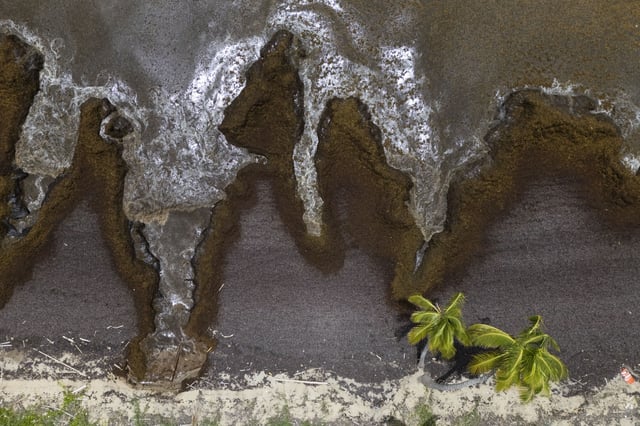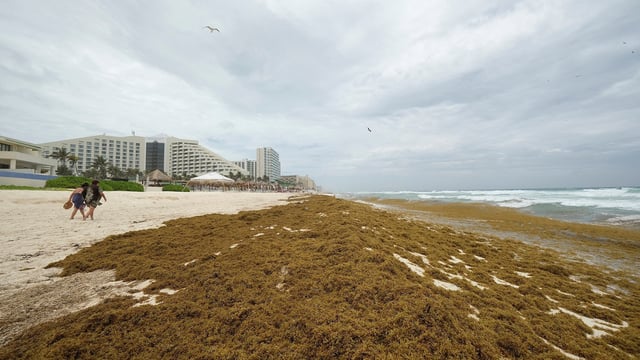Overview
- Scientists observed nearly 39 million metric tons of sargassum in May, surpassing the previous record of 24 million in 2022.
- A new USF-led study attributes the bloom to consecutive strong negative North Atlantic Oscillation events and nutrient-rich deep water mixing, challenging prior river discharge theories.
- The seaweed releases hydrogen sulfide and ammonia that create dead zones and harm mangroves, coral reefs and local air quality.
- Caribbean economies reliant on beach tourism have suffered closures and increased cleanup costs as rotting sargassum deters visitors.
- Small to moderate amounts are expected along the Florida Keys and southeast Florida this summer, prompting state and local cleanup preparations.



